Boris Ostrerov makes a lot of “shit”. This simple statement can certainly be misinterpretated. I trust you will set aside my overly drole and literal note and focus moreso upon the quality and revelatory production of this young and exciting artist. Ostrerov is that rare breed who has taken up studio in Back-of-the-Yards and extended the voice of contemporary art practitioners here in the windy city. This week the COMP Magazine traveled southwest to visit Ostrerov to discuss his family history, how his practice utilizes yet deviates from labor-based professions, his time spent in the studio, and what’s the plan for the remainder of 2019.
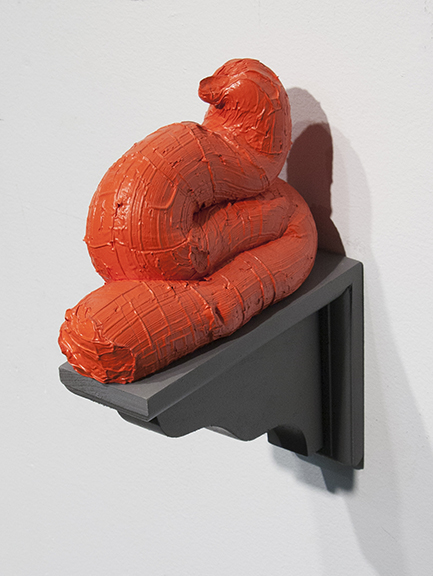
I was rather amused at the music you selected to play during our conversation and session. I’m wondering if it was an Uzbek album or soundtrack? You were born in Uzbekistan, then immigrated to the U.S. with your parents and sister. I’m curious if you can share with us any of your early experiences with the arts?
Oh that is my favorite modern Russian band: Leningrad. Idk, any Uzbekistani bands. They make really high-energy music and some of their songs are really crude, raw and masculine–it’s very refreshing, and they use some traditional music instruments, like trumpets, that make me think of Russian culture. So many other new Russian music I hear is “corny”. Uzbekistan has like no contemporary art scene.
As a child I relished in looking at old representational style masterpieces and wondering about life back then in the depicted scenes. I enjoyed admiring the brushstrokes and other nuances that were used to depict subject matter and illusion. The paintings looked so mysterious! I was very quiet, shy and introverted as a child and nobody wanted to play with me except my parent’s friend’s son Kolya, so I would make things out of building blocks in kindergarten or play with sand in a sandpit to entertain myself. That’s all I needed to satisfy myself. This introversion and solitude contributed to perusing art, specifically painting and drawing, because art is a solitary activity. I love working and making things with my hands.
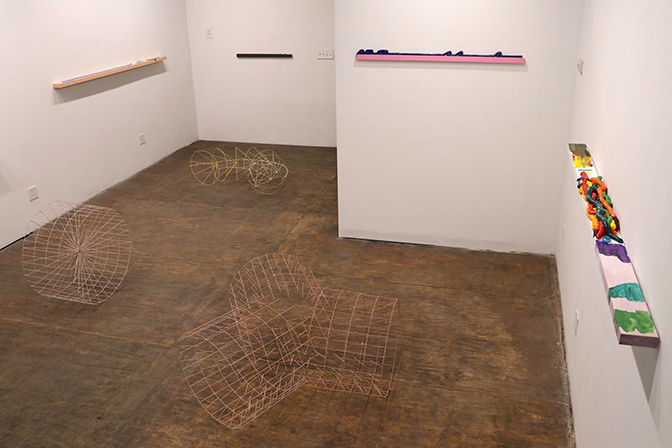
Slow Gallery, Chicago, Illinois, 2019
At Slow Gallery you, along with Matt Kayhoe Brett, recently exhibited Calculus, a study of limits?One of the items that sticks out is the deliberate deviation from predetermined formula. This is something that appears to surface regularly in your work. Can you discuss this interest in departing from traditional standards?
Well, it’s fun to deviate from traditional standards. That’s part of being in a creative state. I just take pleasure in challenging popular beliefs especially with a sense of humor. It’s so energizing!
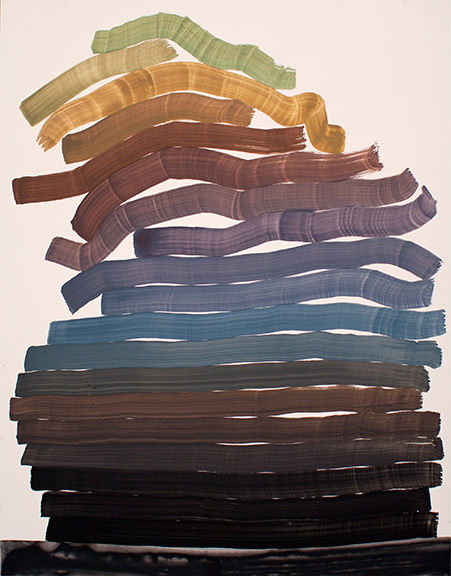
Can we discuss the “Shelf” Paintings series? What piqued this investigation? Can you walk us through your process?
I started stacking brush marks one on top of another vertically on a sheet of paper as if I was using them as sculptural or architectural material. I saw this act as interpreting the role of painting the way an architect or sculptor would perceive this. One layer over the other, but not to create depth or space, but to build a painting layer by layer, but the result was different than the way other painters interpret “layering” paint. This stacking of paint into piles that seem like they might “give” into gravity or tip over relates to my early childhood experiences with stacking building blocks. Later, I decided to make the layers have a physical mass that wouldn’t just give the illusion of weight and gravity but would physically succumb to gravity and fall down the surface of the canvas.
In a pivotal painting I applied oil paint in layers with brushes the same way I did with flat gouache earlier, but this time there were pounds of paint on the surface and some clumps drooped, dripped, or rolled down the face of the painting. I incorporated a few squeezes right from the tube, and logically when the top of the pile reached the top of the canvas stretcher I used the top as a support and just continued the logic by squeezing a few blobs on the top part. I knew this was a pretty interesting gesture, but shortly after I abandoned this body of work because I didn’t know where to take it and experimented with other directions and ideas. 10 months later I look at it in my studio and a light bulb lights up in my head. I ask myself, “why not make a painting just about that top part and use the stretcher as a support for paint, like a shelf.
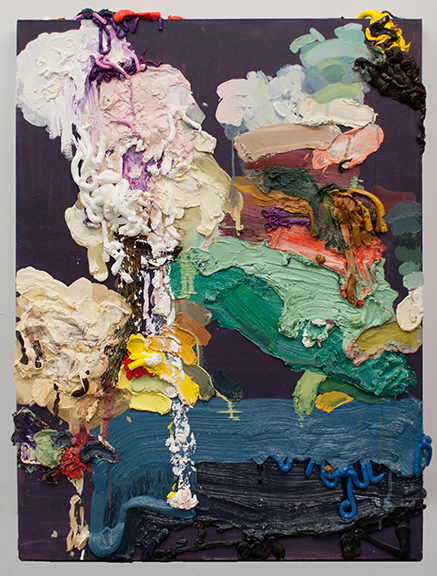
The canvas stretcher has conventionally been used as a support and window into another world, and oil paint was designed to be used thinly to create illusion and trick the viewer, but I using the canvas stretcher as a support or “shelf” for paint to rest on top of was new and exciting. This says something about painting itself. I enjoyed the humor in this and sort of reminding the viewer about what paintings are made of and not fool them with illusory tricks. For a long time I found oil paint super gorgeous, and I wanted to showcase it’s inherent beauty. It’s beautiful straight out of the tube, why alter it?
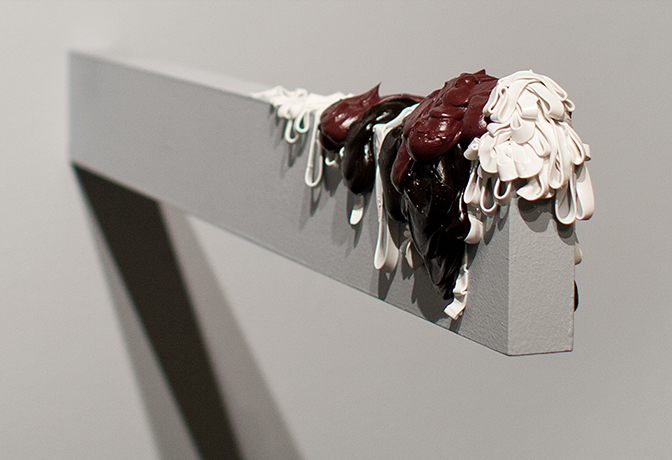
I quickly turned to long horizontal formats and supports that protrude from the wall in order to invade the viewer’s space and make them walk aroundmy painting. I could do so much with narrative, time, and nihilistic ideas with this way of working and got excited. I always wanted to make paintings that confront viewers and can’t be ignored so making the paintings physically intrude the viewers space was amazing. The protruding paintings are like hip-hop music: so direct and in your face. I also enjoyed that I could squeeze paint through an opening and it could reference all types of bodily excretions, and feel kind of like a catharsis or freeing yourself of some sort of energy. I’m happy that the forms can recall different associations. And of course it felt very satisfying to squeeze paint from a tube or piping bag so I felt I discovered my mark-making vocabulary.
One thing that drives my practice is a love of playing. Playing around. Playing around with materials, and with serious conventions.
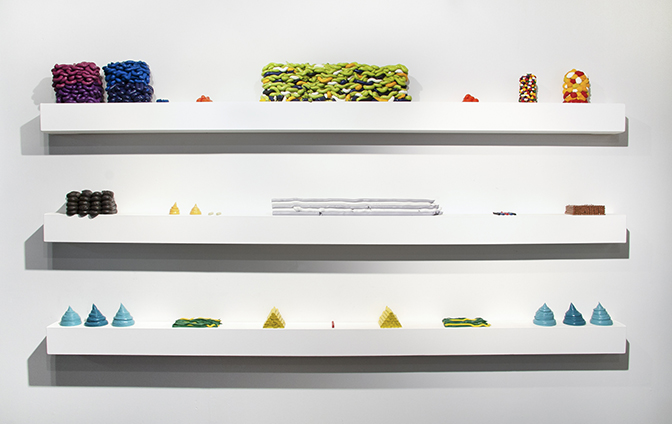
There’s a physicality to your work that I associate with people and professions that do manual labor. The use of cake-decorating bags to create the pieces reminds of working in a bakery. The forms appear like feces and invoke a low-brow sense of humor. And the application of color varies from the grotesque to enticing. Can you speak to the physical aspects of your work?
I don’t think about bakeries while painting, but the action of squeezing paint from a piping bag feels cathartic and at times mechanical. I enjoy low-brow humor and sometimes art institutions feel too high-brow and grey so “decorating” a blank substrate excites me.
I enjoy the duality that my forms evoke. Yes, I’ve had colleagues tell me they want to eat my paintings, and other people tell me they wouldn’t hang this up in their home because the paint looks like shit. I like that my language pokes fun of or comments on the genre of painting. In some works, I referenced minimal sculptures and Donald Judd’s shelf-like pieces. Putting these shit or candy looking forms on top of these minimal structures is either degrading or decorative and that contradiction is something I want left up to people’s interpretation.
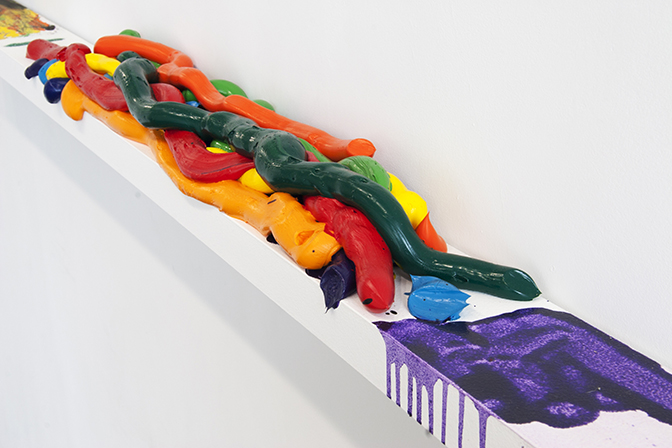
Another body of work is loosely organized as “Abstract”. I believe these works predate the “Shelf” Paintings, yet hold similar visual elements. There is the heavy-handedness in application and garish contrast of color and form. However, these are distinctively different. Can you discuss these works and how they relate to your current investigations?
Actually, they came after the shelf paintings… There is a variety of paintings in this category. Some just play with squeezes applied to surfaces and not necessarily just using the panel as a shelf. Some play with using the panel as a window as well as a support. In others, I toyed with making paint objects where I incorporated illusions of space created by blending colors with brushes as well as squeezes of raw paint onto the surface and all sides.
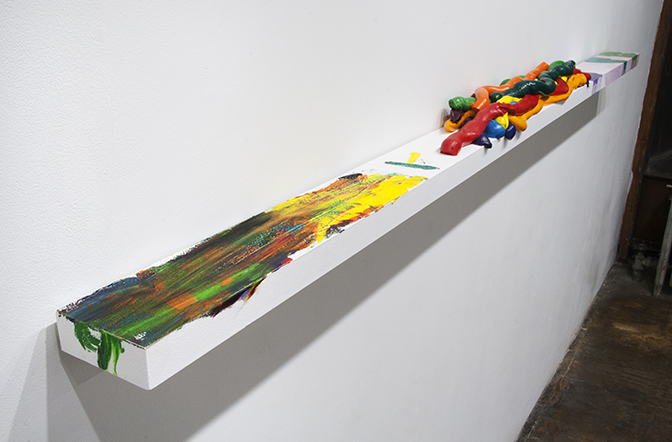
What do you value most in your aesthetic practice?
I love mark-making and making juicy paintings.
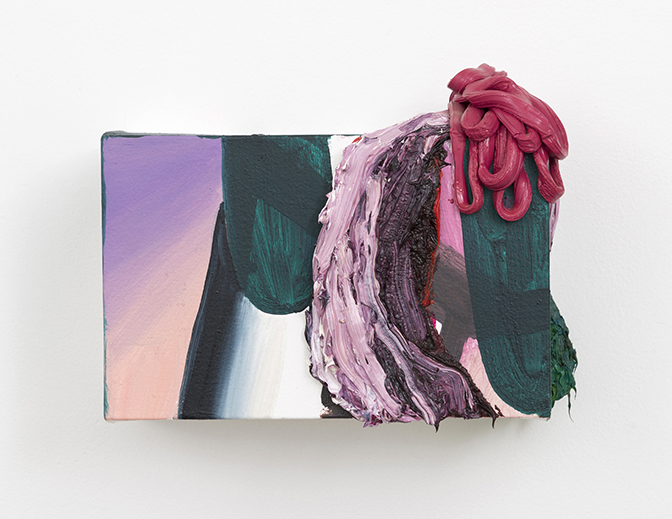
With your recent exhibition put to bed, what the plan for the spring and rest of 2019? Do you have any upcoming exhibitions or new series or works in process?
I want to connect and do more studio visits with artists, and also waiting for cool curators to put me in great shows wink wink. I’m finishing up some new stand-alone topographical pieces and can’t wait to show them.
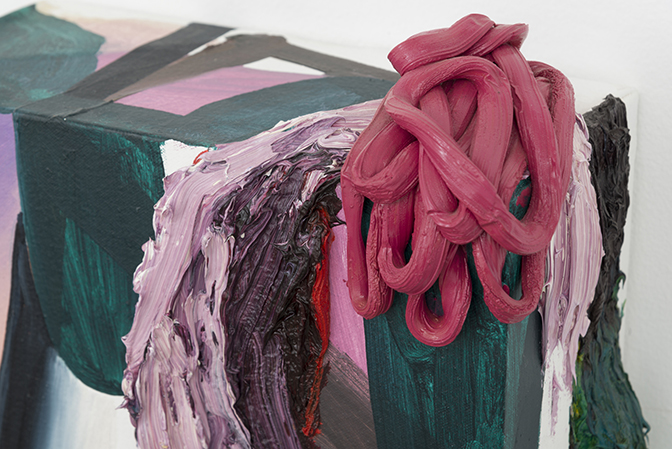
For additional information on the aesthetic practice of Boris Osterov, please visit:
Boris Ostrerov – http://borismakesart.com
PLHK – http://parislondonhongkong.com/boris-ostrerov/
Maake Magazine – http://www.maakemagazine.com/boris-ostrerov
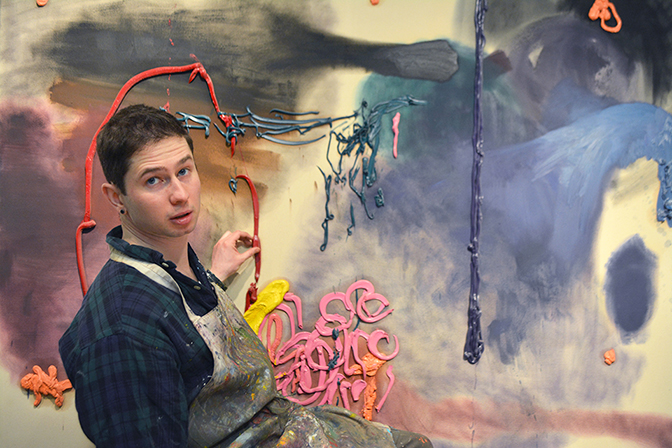
Artist interview and portrait by Chester Alamo-Costello


